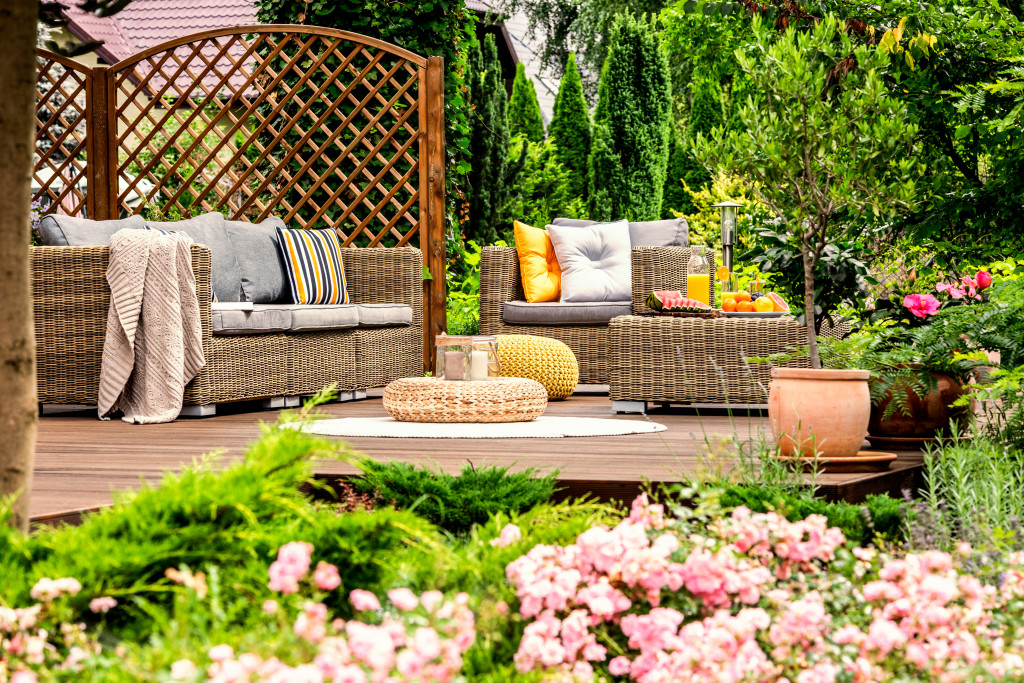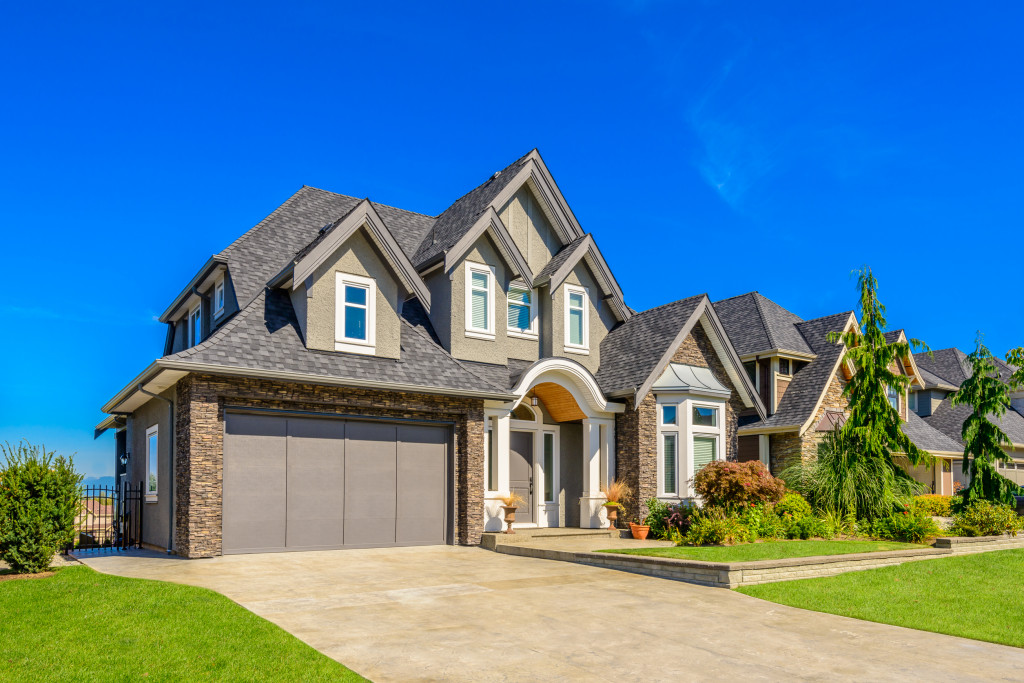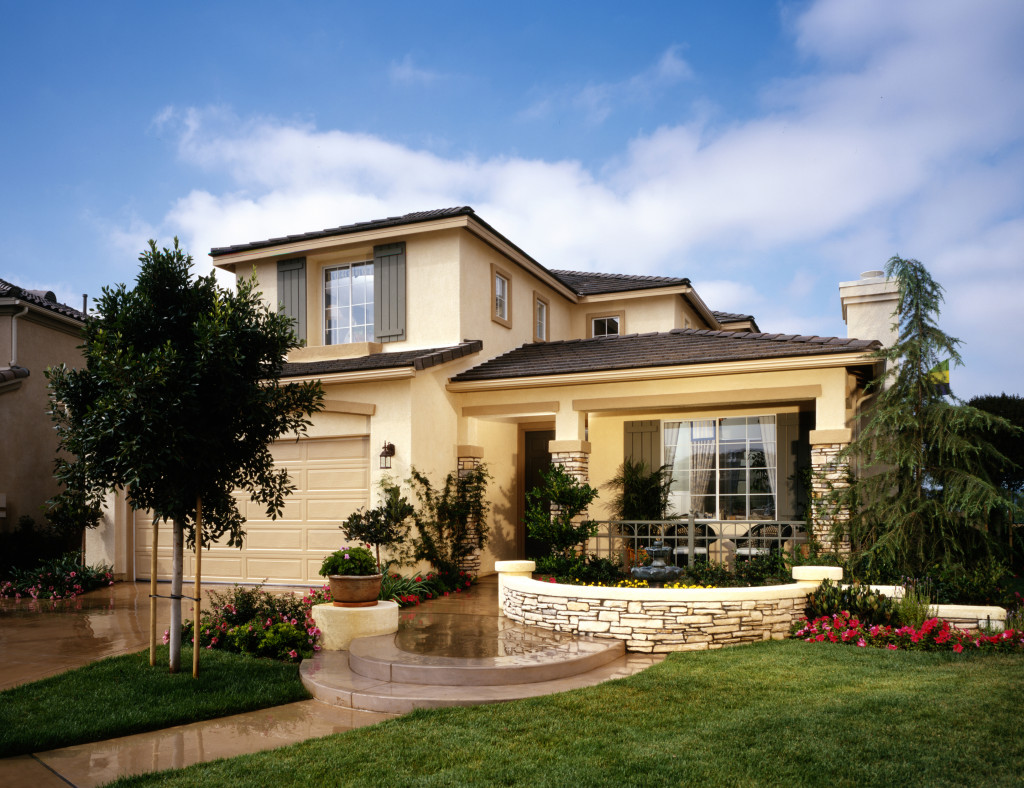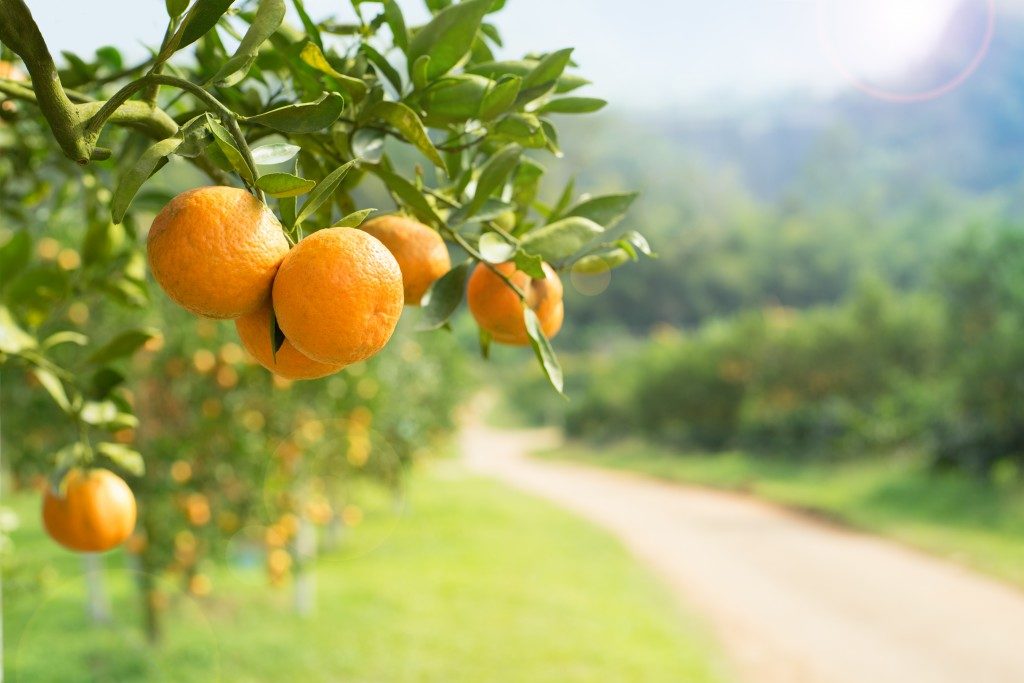- Plan purposefully and create a rough sketch or blueprint of your landscape design before starting.
- Choose plants suitable for your region and complement each other in color, texture, and height.
- Create distinct outdoor spaces for relaxation, entertainment and dining.
- For structure and functionality, incorporate hardscaping elements such as retaining walls, garden borders, driveways, and walkways.
- Maintain your landscape consistently with weeding, mulching, mowing, pruning and fertilizing.
A well-designed landscape can greatly enhance the beauty and functionality of your home. A thoughtfully planned and maintained landscape adds curb appeal and creates an inviting outdoor space for relaxation and enjoyment. This guide will provide five tips to improve your home’s landscape design.
1. Plan with Purpose
Before diving into your landscape project, take the time to plan with purpose. Consider your needs, preferences, and the overall style of your home. Assess your yard’s features and elements and identify areas needing improvement or enhancement.
Create a rough sketch or blueprint of your landscape design, including key elements such as plant beds, seating areas, and focal points. Consider factors such as sun exposure, drainage, and the maintenance requirements of different plants and materials. This thoughtful planning will ensure a cohesive and functional landscape design.
2. Choose the Right Plants

Selecting the right plants is crucial for a successful landscape design. Consider the climate, soil conditions, and the sunlight your yard receives. Choose plants suitable for your region and complement each other in color, texture, and height.
Incorporate a mix of trees, shrubs, flowers, and groundcovers to add visual interest and create layers in your landscape. Aim for a balance of evergreen and deciduous plants to ensure year-round appeal. Don’t forget to consider the maintenance requirements of the plants you choose and ensure they are appropriate for your level of commitment.
3. Create Functional Outdoor Spaces
Make your landscape design more functional and enjoyable by creating distinct outdoor spaces. Designate areas for relaxation, entertainment, and dining. Consider adding a patio or deck for outdoor seating and dining, and incorporate pergolas, shade sails, or umbrellas for sun protection.
Integrate functional features such as fire pits, outdoor kitchens, or water features to enhance the ambiance and usability of your outdoor spaces. Incorporate comfortable seating, outdoor lighting, and accessories to create a welcoming and inviting atmosphere.
4. Incorporate Hardscaping Elements
Hardscaping elements can add structure, definition, and functionality to your landscape design. This is because hardscaping elements are the solid structures that define your landscape’s design.
Here are some hardscaping elements to incorporate:
Retaining Walls
Retaining walls can be aesthetically pleasing and functionally beneficial in a landscape design. When installed correctly, they provide stability while preventing soil erosion and runoff. They also make it possible to incorporate multi-level features into your yard space that can act as separators or barriers to different garden sections. Consider materials like brick, stone, or concrete when selecting a retaining wall for your design.
Garden Borders
Garden borders are essential for achieving a cohesive outdoor look and feel. By using materials like wood, stones, bricks, or metal fencing, you can create an enclosed space within the landscape. Properly placed garden borders will separate flower beds and provide a decorative touch. Garden borders also make it easy to define the boundaries of your landscaping design, helping to create a precise, tailored look for your yard.
Driveways

A driveway is crucial in any landscape design as it provides an easy avenue for vehicular access to your property. When planning a driveway installation, consider materials like concrete or asphalt that are durable and can handle heavy traffic. You may also want to incorporate pavers or gravel for added aesthetic appeal. Properly installed driveways should be functional and aesthetically pleasing, helping to add value to your home’s exterior design.
Walkways
Walkways are a great way to make your landscape look neat and organized. By incorporating walkways, you create pathways between areas of your yard that can be used for walking or leisurely strolling. When installing walkways, choose materials like brick, concrete pavers, or stone for durability and attractiveness. Working with reliable Indian paving suppliers can help guarantee that your walkways are installed correctly and safely. These professionals will ensure that your walkway is installed properly and can also help you pick out the best materials for your project.
5. Pay Attention to Maintenance
A well-maintained landscape is essential for its long-term beauty and health. Plan for regular maintenance tasks such as mowing, pruning, watering, and fertilizing. Consider the time and effort you’re willing to invest in maintenance when choosing plants and materials for your landscape.
Create a maintenance schedule and stay consistent with weeding, mulching, and seasonal clean-up tasks. Regularly monitor the health of your plants and address any issues promptly to ensure they thrive.
To Wrap It Up
Improving your home’s landscape design can significantly enhance your outdoor spaces’ beauty, functionality, and enjoyment. Plan with purpose, choose the right plants, create functional outdoor spaces, incorporate hardscaping elements, and pay attention to maintenance. Following these tips, you can create a well-designed and inviting landscape that complements your home and enhances your outdoor living experience.



